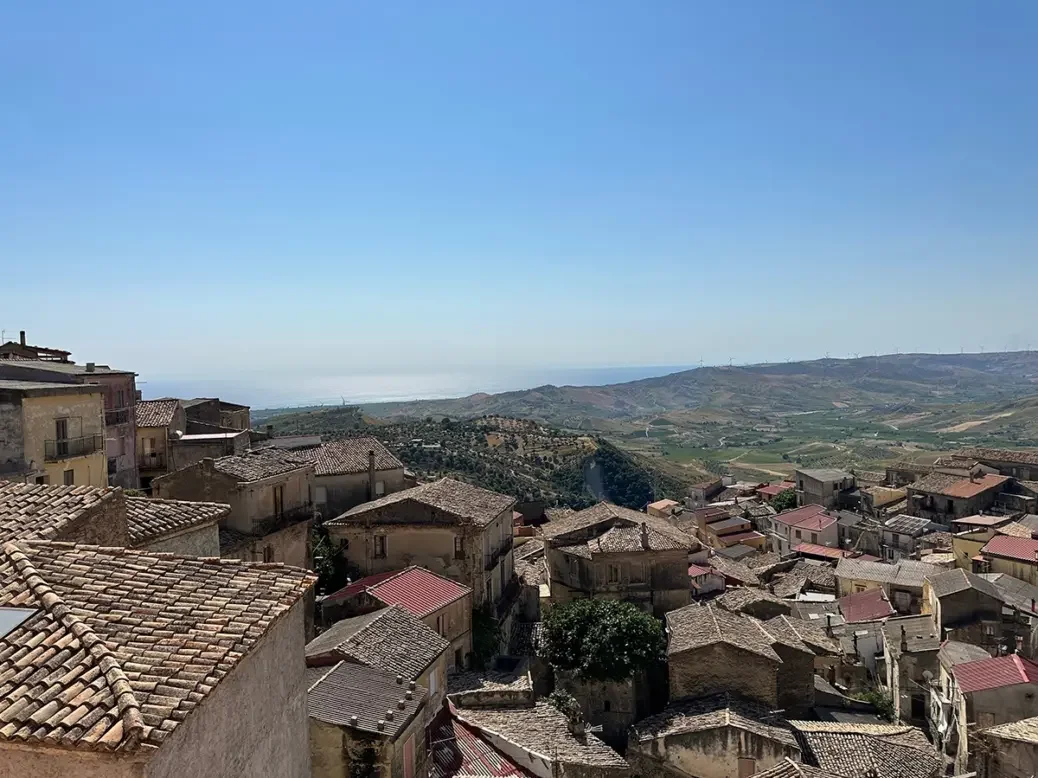
Jim Clarke visits Cirò, a once-struggling Calabrian DOC that has been transformed in a little over a decade by a group of producers making distinctive red and rosé wines rom the local Gaglioppo grape variety, as well as increasingly fine whites from Greco Bianco and Pecorello.
Bordeaux varieties were the last straw. Since the DOC’s formation in 1969, Cirò’s wines had consisted of only indigenous varieties—at least 95 percent Gaglioppo, a local red, with the possibility of small a mounts of Trebbiano or Greco Bianco. But as happened across most of Italy, French grapes were invading. In 2010 the Consorzio di Tutela di Cirò e Melissa successfully pushed for 10 percent of international varieties to be allowed into Cirò DOC wines, sparking the Cirò Revolution.
French grapes were not unknown in the region and had been a component in IGT wines from lager producers like Librandi for some time. “The first Calabrian Tre Bicchieri wine was a Gaglioppo and Cabernet blend,” says Joe Campanale, New York restaurateur and author of Vine: The Essential Guide to Real Italian Wine. “So that wasn’t something I would have had on the list at the restaurant. It was a shame to me that the most recognized wine from Calabria was the one that had Cabernet in it, but I guess that was just a sign of the times.”
Cirò’s growers had seen grape prices wither since the introduction of the euro ten years earlier. Some had abandoned their vineyards, others tried to push yields to make up for the lower prices, others found they had to become vignerons themselves if they wanted to continue farming. “In 2005 there were about ten wineries,” says Cataldo Calabretta, owner of the eponymous winery. “Now there are about 60. Even if we are not a ‘rich’ terroir like the Langhe, the profit on a bottle of wine is certainly much better than selling grapes.”

Calabretta says the Cirò Revolution formed spontaneously in the process of protesting the 2010 rule changes. “Each of us individually wanted to produce a wine faithful to tradition, starting from the symbolic vine of the area, Gaglioppo. We understood that we could collaborate and that everyone’s voice would be stronger than the voice of a single winemaker. From that moment we decided to collaborate on multiple aspects and promote the ‘terroir’ of Cirò together.”
Gaglioppo: A study in contradictions
Mentions of Gaglioppo in the region date back to the 13th century. Like a few of its Italian cousins, it is a study in contradictions. In most red varieties tannin intensity and depth of color go hand in hand, as both come from the skins of the grapes. While Gaglioppo’s tannins can be powerful, there is little color to be extracted, as the grape is low in anthocyanins. In particular it lacks malvidin, which would provide purple and blue tones, so Gaglioppo wines tend toward an orangish hue even when young; one can understand how marketing-minded producers might wish to blend some inky Cabernet Sauvignon into the wine in an era when depth of color was thought to be a marker for quality.
The Cirò DOC embraces about 1,500ha (3,700 acres) of vines, all spread across a cape projecting into the Ionian Sea. Most producers own different parcels across the four communes: Cirò, Melissa, Cirò Marina, and Crucoli. The most significant distinction among them is a matter of elevation, with plantings ranging from almost seal level up to 550m (1,800ft). One third of the DOC’s plantings stretch across a flat, seaside area that was divvied up among demobilized soldiers after World War I. The rest are on hillsides a short distance back from the water. Soils are relatively uniform, with calcareous marl and a large proportion of clay, but soils on the lower, seaside areas are much richer in humus. They’re also higher yielding; ten tons per hectare is typical, whereas the hillside vineyards have to be content with one-third that amount, at best.
One of the projects of the Cirò Revolution aimed to explore these differences in more detail. During the 2019 vintage members set aside small amounts of grapes from nine different subzones, each harvested in the same week and vinified in the same manner. In general the hillside vineyards yield riper grapes with smaller berries and bunches, more suited to red wine production, while the flats are better served as rosato wines.

Cirò whites and rosati
Rosato, as well as white wines, have become much more important to Cirò. Whereas red wines made up the vast majority of production until recently, nowadays rosato and white wines make up half of the DOC’s wines. “Rosato is Cirò’s historic wine,” Calabretta says, “especially in the ‘Cerasuolo’ version, stronger in tone and slightly tannic, more similar to a light red but much more thirst-quenching and gastronomic.” Certainly the rosati made with intention, with grapes grown and harvested for that purpose and not as a sideline to red wine production, bear that out.
Two grape varieties dominate white wine production in Cirò, which has seen a huge surge in the past five years, albeit mostly in the local market. Greco Bianco is the better known; it yields fresh, low-alcohol wines—11 or 12% would be typical—with citrus and mandarin notes and the same salinity that is often found in the reds and Rosati. There’s also a growing interest in Pecorello, which yields a richer, more structured wine.
Despite the growth of white and rosato production, red Cirò remains the DOC’s calling card. Absent the smothering influence of international grape varieties Gaglioppo reflects the combination of seaside and mountains that defines the region, in contrast to some of the powerful, rich wines found in neighboring Puglia. “They’re red wines that actually show some minerality and saltiness,” Campanale says. “Gaglioppo has some good tannin to it, but it doesn’t have the weight and jamminess of some of the older-style wines. The wines are really pretty and lifted but have some texture to them as well.” Expressive in their youth, they also age well thanks to their acidity and structure. Thanks to the strong voice of the Cirò Revolution, the Gaglioppo grape and Cirò’s terroir have been given the chance to speak eloquently through their wines.
Cirò Revolution Producers: Cataldo Calabretta, A’Vita, Sergio Arcuri, Tenuta Del Conte, Fratelli dell’Aquila, Vigneti Vumbaca, Francesco Fezzigna, Cerminara






